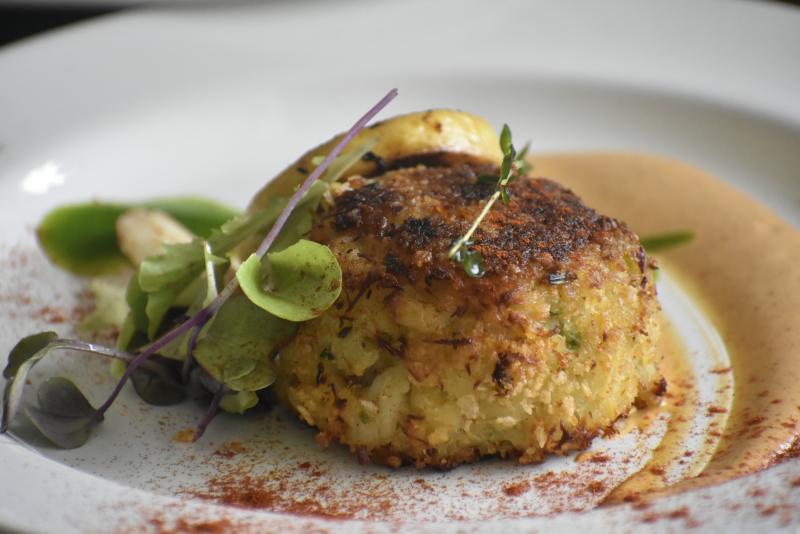Industry professionals challenge findings in newly published research.
The latest data from the Atlantic States Marine Fisheries Commission show horseshoe crab populations along the East Coast are generally recovering from what was believed to be very low levels 20 years ago. Sharp reductions in the number of crabs caught for use as bait in the conch and eel fishery helped stop their decline.
But horseshoe crabs also are used in the biomedical industry to produce a substance that is critical to the detection of impurities in vaccines and surgically implanted devices like those used in knee and hip replacements. While the number of crabs that die from that procedure is small — around 72,000 in 2017, according to ASMFC data, compared with over 990,000 caught and killed in the bait fishery — recent research questions whether there are lingering effects from the bleeding procedure that could affect species recovery.
“What we’ve shown is that the other 85% (of the over half-million horseshoe crabs caught for the biomedical industry) returned to the water are affected. They’re kind of sick,” Plymouth State University biologist Christopher Chabot said.
The blood of the crabs is processed into limulus amebocyte lysate, or LAL, a critical purity test product.
Chabot's study, conducted with University of New Hampshire researchers Meghan Owings and Winsor Watson, and recently published in the National Oceanic and Atmospheric Administration’s Fishery Bulletin, found that the process of blood removal from horseshoe crabs could delay spawning for up to a year and leave crabs disoriented for as long as a week after they are released.
Brett Hoffmeister, the LAL production manager at East Falmouth-based Associates of Cape Cod, one of six facilities in the country producing LAL, disputed the methodology and conclusions of the study.
“If we were to treat crabs the way they did in those studies we would be fired and we’d probably lose our permit to operate,” Hoffmeister said. “This is not a dire story, (horseshoe crabs) are not going extinct. This is actually a positive story of a population doing well. And (LAL testing) is a lifesaving process.”
Hoffmeister took exception to the time out of water and the temperature levels crabs were exposed to in the study. Chabot said researchers were unable to get cooperation from the industry, but followed biomedical industry procedures as laid out in prior research papers to conduct their testing.
Researchers divided 111 horseshoe crabs caught in New Hampshire into groups that were subjected to various combinations of a mean temperature of nearly 89 degrees for four hours, being driven in a car for four hours, a 16-hour overnight stay indoors to replicate time in the lab and the extraction of 30% of their blood.
Blood samples were taken before and after the testing, and animals were fitted with accelerometers that measured orientation and movement. Researchers found the overall mortality of 17% was roughly equivalent to the 5% to 30% estimate from other studies and the 15% mortality number used by ASMFC to gauge the biomedical industry impact on the population.
“What we found was that if bleeding was paired with one of the other stressors like high heat or time out of the water, there was a significant impact on mortality and HCY (hemocyanin) levels,” Chabot said.
HCY is like hemoglobin in our blood, critical to oxygen uptake, the immune system and shell repair, Chabot explained. The new research showed that spawning females were particularly vulnerable because their HCY levels were already low after winter fasting and spring and early summer egg production.
Plus, it found that the hemocyanin that remained in the crab blood held less oxygen. The orientation tests on 87 of the crabs also showed that higher HCY levels also led to higher levels of activity.
The biomedical harvest tends to rely on females because they are larger and have more blood than males, Chabot said. He said the study suggested it might be better to delay the season until mid- to late summer and early fall when hemocyanin levels have been restored. He said the study also showed there would be benefits to keeping crabs cool, returning them to the water within 48 hours, monitoring water quality and feeding crabs while in captivity.
But Hoffmeister said the industry already meets many of the best practices outlined in the study.
“These are things we have been doing for a decade,” he said. “We generally have them back in the water within 24 hours, if not sooner. We see that industrywide.”
Hoffmeister said they already use refrigerated trucks for transport, and that there are regulations all along the coast to protect spawning horseshoe crabs. Hoffmeister said ASMFC already reached the conclusion that the biomedical fishery had no impact on the horseshoe crab population.
“The populations are growing and there’s sufficient data to show that, including in areas where the biomedical harvest takes place,” he said.
Follow Doug Fraser on Twitter:@dougfrasercct.
The Link LonkAugust 22, 2020 at 05:18AM
https://ift.tt/2Ylk3xJ
Study: Biomedical use of horseshoe crabs could hinder spawning - Cape Cod Times
https://ift.tt/2MkGRbk
Crab

No comments:
Post a Comment